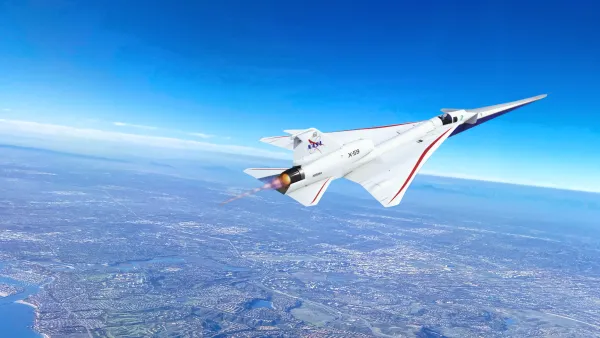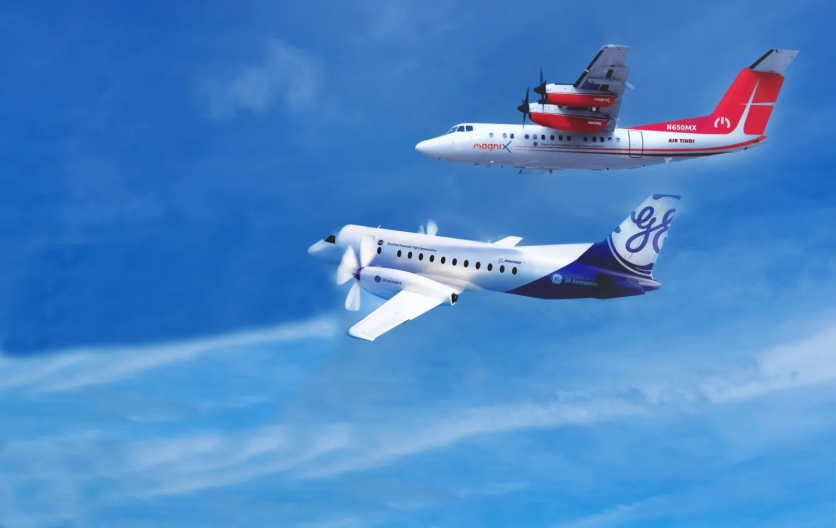NASA has soared to new heights in aeronautics in 2023, pushing the boundaries of aviation technologies to enhance passenger experiences, bolster US economic growth, and chart a course toward cleaner, quieter, and safer skies.
Here's a look at the aviation breakthroughs achieved by NASA this year.
Faster Than Sound: The Quesst Mission of NASA
At the forefront of NASA's aeronautical ventures is the Quesst mission, aimed at ushering in commercial, faster-than-sound air travel over land. This ambitious endeavor centers around NASA's X-59 research aircraft, a pioneering supersonic jet meticulously designed to mitigate the loudness of sonic booms, transforming them into gentle thumps.

The X-59 will traverse select US communities as part of the mission, collecting invaluable human response data on the perceived noise levels. This data will be instrumental in shaping new regulations that may enable supersonic flight over land.
Another pivotal milestone in the Quesst mission was the completion of the X-59's assembly at Lockheed Martin's Skunk Works in California. The aircraft, equipped with cutting-edge technology, underwent rigorous testing and received its final coat of paint. It set the stage for its highly anticipated public debut and inaugural flight scheduled for 2024.
The X-66 Project
NASA's collaborative efforts with Boeing also took flight in 2023, marking the inception of the X-66 project. This full-scale demonstrator aircraft is poised to validate revolutionary fuel-efficient designs and green technologies to curb emissions from future single-aisle airliners.
The project plays a crucial role in supporting the US' ambitious target of achieving net-zero greenhouse gas emissions from aviation by 2050.

Redefining Community Transportation: The AAM Mission
Another trailblazing initiative on NASA's aeronautical agenda is the Advanced Air Mobility (AAM) mission, poised to redefine community transportation by seamlessly integrating passenger transport, cargo delivery, and public service capabilities into low-altitude airspace.
This forward-looking project lays the foundation for the burgeoning industry of electric air taxis and drones. NASA actively contributes data to guide the industry's development and assists the Federal Aviation Administration in incorporating these vehicles into the national airspace.
New Look Unveiled
In the realm of hybrid electric aircraft, 2023 saw a collaboration between GE Aerospace and magniX. The unveiling of paint schemes for the Saab 340B and DeHavilland "Dash 7" showcased the innovative strides in NASA's Electrified Powertrain Flight Demonstration project, exemplifying the promising future of electric aviation.

Drones to the Rescue
Amid these milestones, NASA extended its reach into emergency response operations by launching the Advanced Capabilities for Emergency Response Operations (ACERO) project. ACERO is enhancing wildland fire management operations by leveraging drones and advanced aviation communication technologies.
NASA collaborates with various stakeholders, including government agencies, the scientific community, and commercial industries, to create a concept of operations facilitating the safe use of drones in airspace restricted for operations around wildland fires.
"This year, NASA continued to make the impossible, possible while sharing our story of discovery with the world. ... We're making great strides to make aviation more dependable and sustainable," NASA's Administrator Bill Nelson said in a statement.
Related Article : NASA's 3D-Printed Rocket Engine Beats Previous Records, Advancing Deep-Space Exploration





